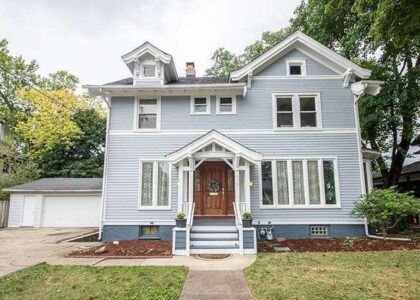Welcome to Woodland Cemetery in Quincy, Illinois, a place where history and nature intertwine. Established in 1846 by John Wood, who later became the Governor of Illinois, this cemetery is a classic example of the rural cemetery movement that swept through America in the mid-19th century. This movement emphasized the creation of burial spaces that could also serve as public parks, a concept that Woodland embodies with its hilly landscape and scenic views of the Mississippi River.
Originally, Quincy had limited burial grounds, and as the city expanded, the need for a larger cemetery became apparent. John Wood, then the mayor of Quincy, took it upon himself to purchase land and design the cemetery, reflecting the natural contours of the landscape. His vision was inspired by the picturesque design principles used in Mount Auburn Cemetery in Massachusetts, the first rural cemetery in the United States.
Woodland Cemetery quickly became the final resting place for many of Quincy’s citizens, including those who succumbed to the cholera epidemic between 1849 and 1851, despite prohibitive laws. It also became a military burial site during the Civil War. The cemetery’s Civil War memorial and the graves of nearly 250 soldiers highlight its significance in American history.
Notable figures buried here include Martin J. Hawkins, a Medal of Honor recipient from the Civil War, and several congressmen such as Orville Hickman Browning and William Alexander Richardson. The cemetery also honors women who contributed significantly to the community, like Sarah Denman, founder of Blessing Hospital, and Abby Fox Rooney, the first woman licensed to practice medicine in Illinois.
In addition to its historical significance, Woodland Cemetery is a monument to Victorian funerary art. The grave markers and tombs showcase Gothic Revival and Neoclassical styles, with symbols of life, death, and innocence depicted throughout.
Today, Woodland Cemetery remains a place of reflection, where visitors can connect with the past and appreciate the stories of those who shaped Quincy and beyond.


